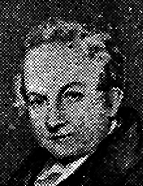

Active bibliography: Dona Ignez de Castro, A Tragedy from the Portuguese of Nicola Luiz, With Remarks on the History of that Unfortunate Lady . Newcastle-upon-Tyne, D. Akenhead & Sons; London, Longman, Hurst, Rees and Orme, 1808; “History of Portugal”. The Monthly Magazine: reflecting men and manners , New Series. London, printed for the proprietors, vol. II, Nov. 1807, pp. 315-316, 316-320, Dec. 1807, 385- 389; vol. III, Feb. 1808, pp. 81-83, March 1808, 224-226, April 1808, 292-296, June 1808, 430-432; vol. IV,
July 1808, pp. 19, 20-21; “Memoranda Lusitanica”. The Monthly Magazine: reflecting men and manners , New Series. London, vol. V, April 1809, 210, 211-214, May 1809, 269-272, Aug. 1809, 83-86; vol. VI, Nov. 1809, 268-272, Dec. 1809, 328-333; Sonnets from the Portuguese of Luis de Camoens . Newcastle-upon- Tyne, Akenheads Printers, 1810; Memoirs of the Life and Writings of Luis de Camoens . London, Edinburgh and Newcastle-upon-Tyne: Longman, Hurst, Rees, Orme and Brown, 2 vols. 1820; Bibliotheca Lusitana; Or Catalogue of Books and Tracts, Relating to the History, Literature, and Poetry, of Portugal: Forming Part of the Library of John Adamson, Newcastle-upon-Tyne: T. and J. Hodgson, 1836; Lusitania Illustrata: Notices on the History, Antiquities, Literature, etc. of Portugal. Literary Department, Part I. Selection of Sonnets, With Biographical Sketches of the Authors . Newcastle-upon-Tyne, T. and J. Hodgson, 1842; Idem […], Literary Department, Part II. Minstrelsy . Newcastle-upon-Tyne, M. A. Richardson, 1846; Reply of Camoens (supposed to have been given by the Portuguese poet to a fidalgo, who requested him to compose some verses for him) . Newcastle-upon-Tyne, imprinted by M. A. Richardson, 1845; Sonnets , Newcastle-upon- Tyne, imprinted by M. A. Richardson, 1845; Ballads from the Portuguese, translated and versified by J. A. and R. C. C. Newcastle-upon-Tyne, M. A. Richardson, 1846; The Lusiad of Luis de Camoens, Books I to V, Translated by Edward Quillinan. With notes by John Adamson . London, Edward Moxon, 1853.
This work is financed by national funds through FCT - Foundation for Science and Technology, I.P, in the scope of the projects UIDB/04311/2020 and UIDP/04311/2020.
